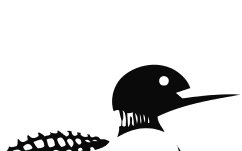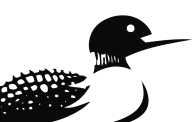
Some Canadians could be denied a U.S. visa due to obesity or other medical conditions.
“Short-term, visa-exempt visitors should see little change at the border,” lawyer Rosanna Berardi told National Post on Friday. She is the managing partner at
.
“Applicants with notable medical conditions should be prepared to show strong financial capacity and private insurance to reduce the risk of refusal.”
Earlier in November, a directive was sent via cable to embassy and consular officials on behalf of the State Department. They were given instructions to screen foreigners who want to live in the U.S. for a wide range of conditions, as well as age and likelihood that they “might rely on public benefits,”
.
These people risk becoming a “public charge,” in the eyes of the federal government, or a strain on American resources.
“Under U.S. immigration law, a person is inadmissible as a ‘public charge’ only if they are likely to become primarily dependent on certain government cash benefits or long-term institutional care. That definition has not changed,” said Berardi.
However, she said, the Nov. 6 guidance from U.S. Secretary of State Marco Rubio instructs officials “to treat chronic health conditions, limited finances, low-skilled employment or limited English, prior public assistance, and weak affidavits of support as red flags.”
“You must consider an applicant’s health,” said the cable, according to KFF Health News. “Certain medical conditions — including, but not limited to, cardiovascular diseases, respiratory diseases, cancers, diabetes, metabolic diseases, neurological diseases, and mental health conditions — can require hundreds of thousands of dollars’ worth of care.”
“Officers are now told to scrutinize medical exams more closely and weigh these factors heavily in the ‘totality of the circumstances,’ effectively raising the bar for applicants with significant health issues and modest financial resources,” said Berardi.
While 99 per cent of Canadians don’t require a visa to enter the U.S., said Berardi, there is a small group that does. “The only Canadians required to apply at a U.S. consulate are E-1 and E-2 treaty applicants and K-1 fiancé(e) visa applicants,” she said.
Treaty Trader (E-1) and Treaty Investor (E-2) visas are for citizens of countries with which the United States maintains treaties of commerce and navigation,
according to the U.S. Embassy & Consulates in Canada
.
“Canadian citizenship does not create an exemption from the public-charge ground, but most Canadians apply for entry directly at the border and avoid consular review entirely,” Berardi said.
“The new guidance will have its greatest impact on the small group that do need visas — especially E-1/E-2 applicants and anyone seeking a family- or employment-based immigrant visa.”
Permanent residents of Canada, who
to enter the U.S., “will feel the effect even more.”
In a statement to National Post, the Canadian Snowbird Association said it was aware of the new U.S. visa guidance “related to certain chronic health conditions.”
“At this time, there is no indication that Canadians entering the United States as tourists, who do not need to pre-apply for a visa, will be affected by this policy,” the statement said.
“The vast majority of Canadian snowbirds also travel to the U.S. with comprehensive private travel medical insurance, which further reduces any concern that they would be viewed as a potential burden on the U.S. health-care system.”
The directive appears to be part of a continuation of the Trump administration’s crackdown on the “flow of immigration,” The Washington Post reported.
“It’s no secret the Trump Administration is putting the interests of the American people first,” Tommy Pigott told National Post in an emailed statement. He is the principal deputy spokesperson for the State Department.
“This includes enforcing policies that ensure our immigration system is not a burden on the American taxpayer.”
Our website is the place for the latest breaking news, exclusive scoops, longreads and provocative commentary. Please bookmark nationalpost.com and sign up for our daily newsletter, Posted, here.






















